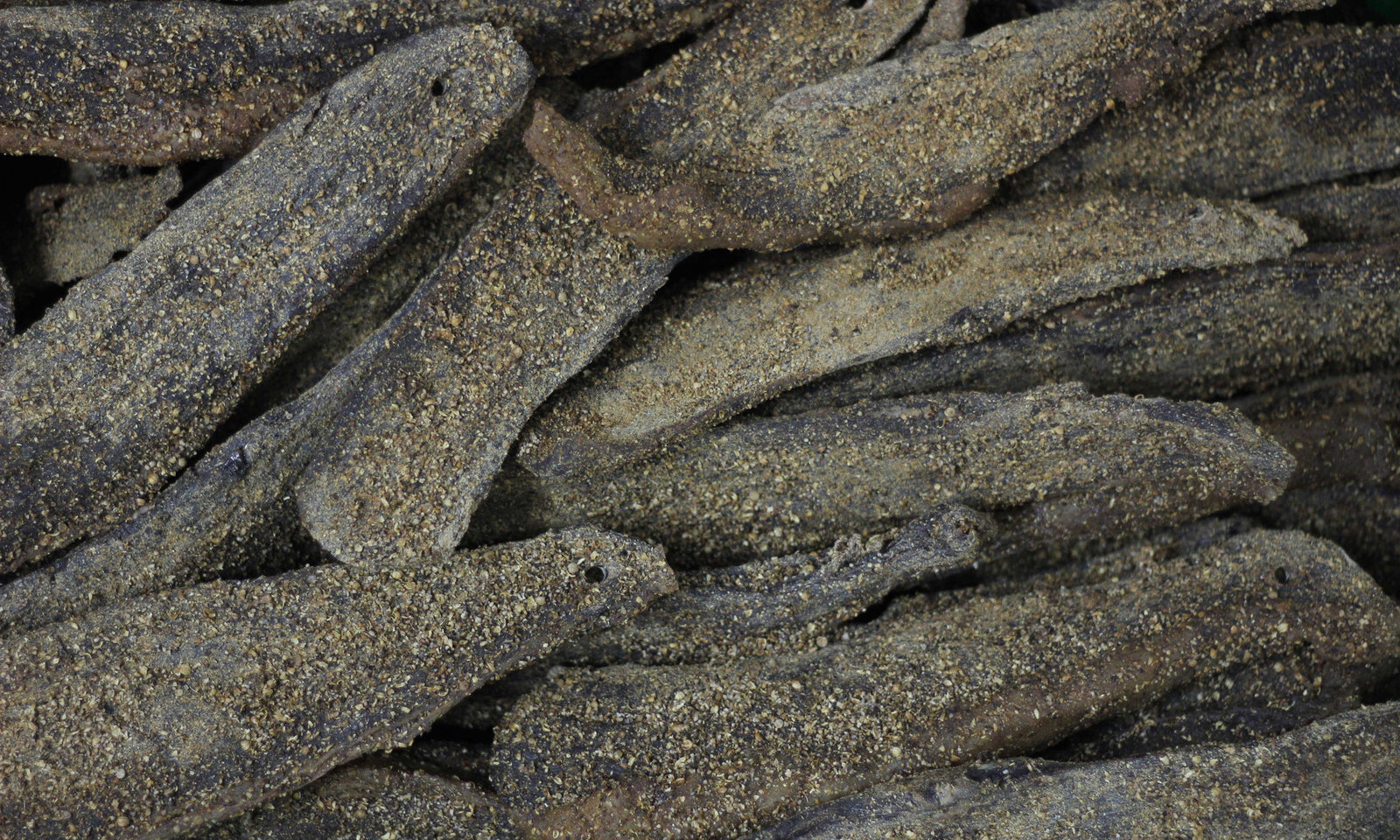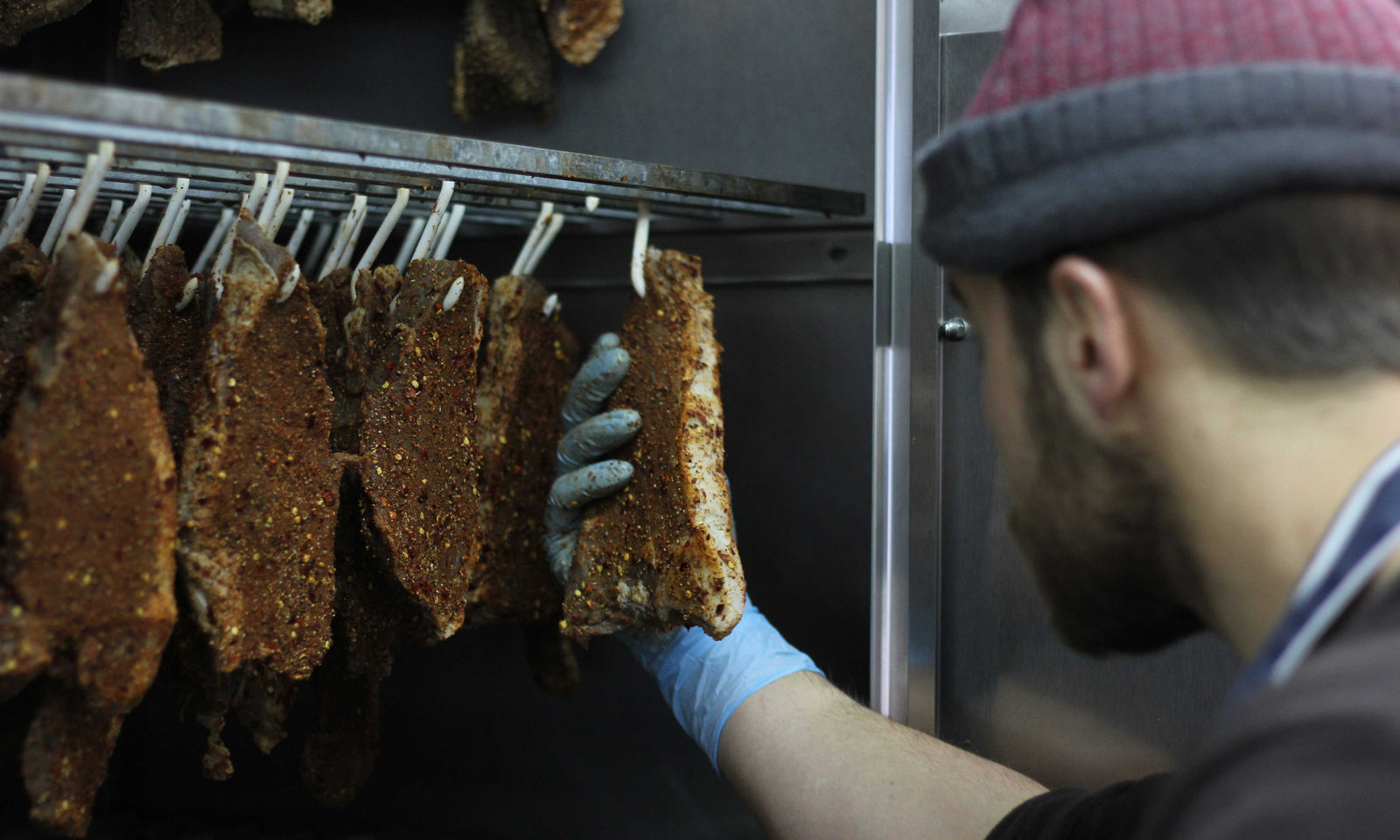Once the ol’lumpa meat’s been cleaned up and the eye’s been removed, we now cut our steaks. For a few pseudo-reasons it’s essential the steaks be cut with the grain, the main reason being that once the steaks are dry, they're put through the slicer and cut across the grain, meaning the final slices of Biltong are easy to tear and chew. Also this is what our family have been doing for generations and I don’t want to make gramps angry, especially in his final days.
We cut our steaks extra thick, as we’ve found hanging them for 10 days makes the most surreal Biltong, so soft, tender and a consistent dryness all the way to the centre. (size matters)
Once we’ve got stacks on stacks of steaks, in goes the vinegar until the steaks are swimming around. We then add our ‘marinade mix’, this is a unique mix of spices, different to that of our final ‘press spice’, using the two different spices makes a world of difference and is unique to the Barbell Biltong process.
It's a long process but luckily all of us boys have strong wrists and a good eye for an inch.
Leave a comment
Comments will be approved before showing up.
Also in Learn How To Make Biltong

Step five: Biltong steaks
The sad reality here is an underlying issue of steak inequality.

Step Four: Hanging the steaks
Small pieces go up the top of our cabinets and the monsters reside down the bottom. If you’ve got a mixed tub you’ll find yourself squatting up and down repeatedly.




